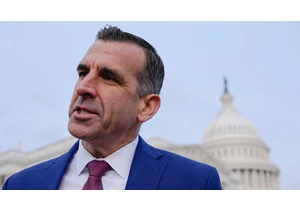The summer of 2024 started less than a month ago, but it’s already off to a scorching start. Phoenix has already topped 112 degrees and the year’s first Heat Dome arrived weeks ago.
Beyond the well-founded meteorological fears of heat-related deaths, a new worry is starting to rise as temperatures continue to climb across the country: How will the country’s tech infrastructure hold up under the strain of increasingly hot weather? Experts warn it might not fare as well as we’d hope.
“Heatwaves pose significant risks to tech infrastructure, particularly data centers and critical IT systems,” says Spencer Kimball, cofounder and CEO of Cockroach Labs.
Data centers are naturally hot places that require a lot of air-conditioning. The summer heat makes it even harder to keep those temperatures under control. And for businesses that rely on those centers to be up and running 24/7, any downtime can be costly and damaging to their reputation.
Data Centers tend to be spread out, but the heat waves have hardly been confined to a single area. In the Bay Area, temperatures touched 100 degrees in June. Not long ago, summer highs in that region rarely topped 85 degrees. Virginia, where Amazon launched a data center in 2006, faced extreme heat risks in June, with heat indexes of 105. And Ohio, home to another Amazon data center, soared to the high 90s a few weeks ago.
Heat is a somewhat subjective thing, though. A hot day in Boston, for example, might seem almost cool to someone in Las Vegas. That makes the risk to infrastructure as much a regional one as it is environmental. Companies that concentrate their databases in a single area face a higher risk.
There’s precedent for concern. In 2022, when the UK was being hammered with a heat wave, Google and Oracle both suffered outages when their data centers saw failures in their respective cooling systems. Google was impacted for a few hours and was forced to power down some of its cloud servers to prevent damage to the equipment. Oracle was wiped out for nearly a day.
Extreme heat is one of many risks facing our tech infrastructure. Rising temperatures also bring about meteorological volatility in the form of severe storms. In New York, from 2017-2020, nearly 40% of all outages followed severe weather, typically within just eight hours. Those outages lasted varying times, too. Strong winds could lead to outages averaging 12 hours. Heavy rain brought about outages lasting six hours. But when the storm had both, that lead to outages lasting an average of 17 hours, according to a recent study published in the journal PLOS Climate.
The worst-case scenario for tech companies is longer-term outages for critical systems, which could impact end-users in a variety of ways, from cloud outages to financial service disruptions to communications gaps.
As companies prepare contingency and disaster-recovery plans for climate-related outages, many are unwittingly making things worse by embracing and leaning into artificial intelligence. Today’s data centers already emit greenhouse gases at the same level as the aviation industry and consume vast quantities of water. The growth of AI will only increase those energy demands. (So will the crypto industry.)
So what can companies do to protect themselves from heat-related outages? Some are exploring the feasibility of putting data centers in outer space to reduce their carbon footprint and protect against heat-related outages. That’s still experimental and not especially practical for most businesses, though.
Beyond geographically distributing their architecture, Cockroach Labs’ Kimball says, companies should ensure backups of data are made regularly. Embracing the cloud, though, might be the best option for many businesses, he adds.
A public cloud offers scalability as well as advanced security. And public cloud providers are more skilled at disaster recovery in case the heat (or some other factor) causes an outage, ensuring operations resume as fast as possible. “This strategic move not only addresses immediate resilience needs but also positions organizations to thrive in an increasingly unpredictable operational landscape,” Kimball says.
Melden Sie sich an, um einen Kommentar hinzuzufügen
Andere Beiträge in dieser Gruppe

Many things are considered distinctly millennial: a man bun, avocado toast, axe-throwing bars. Now you can apparently add millennial burger joints to that list.
On February 11, TikToker

OpenAI released a new base model on Thursday called GPT-4.5, which the company said is its best and smartest model for chat yet. It’s no

Stripe on Thursday announced a tender offer for employees and shareholders that valued the company at $91.5 billion, nearly 41% higher than

Unwanted phone calls are out of control. Whether it’s a

California Democrat Rep. Sam Liccardo, a freshman congressman who represents Silicon Valley, said he’s surprised the first piece of legislation he’s sponsoring takes aim at President


President Donald Trump vowed to fight government abuse and introduce more transparency, a stance that might align him with a little-known agency charged with watching over the U.S.’s powerful spyi
